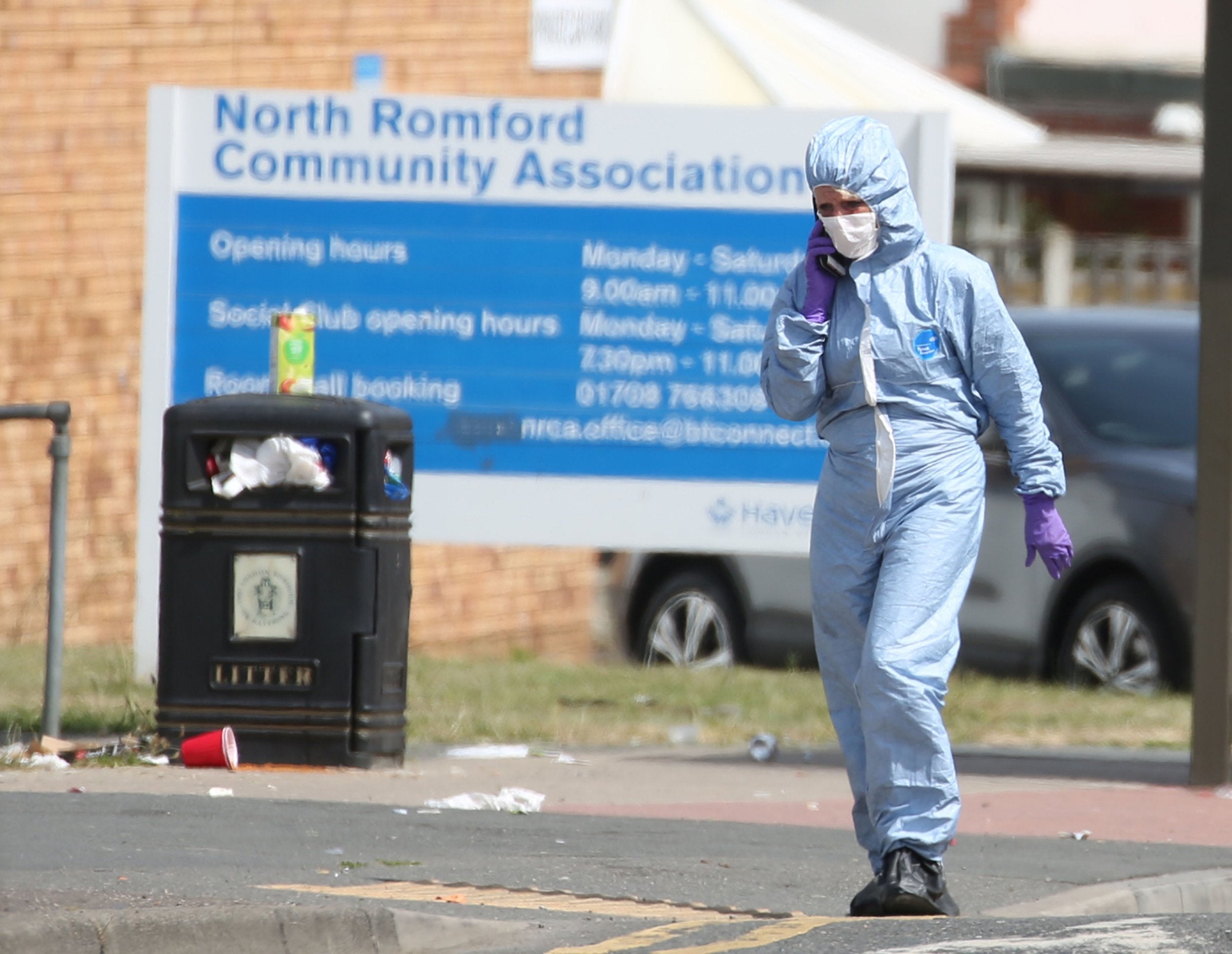Violent crime 'stabilising in London', police say after 87 people killed so far in 2018
Police say middle-class cocaine users partly driving violence by increasing demand for drugs

Violent crime is starting to “stabilise” in London, police said, even though 87 people have been killed in the first seven months of the year.
The capital's murder rate is on course for a 28 per cent rise in murders in 2018 after a wave of street killings.
Last week, 18-year-old Latwaan Griffiths became the latest casualty after he was stabbed and thrown from a moped into the street. He later died in hospital.
Insisting that every death was “one too many” the commissioner of London's Metropolitan Police, Cressida Dick, played down fears that London’s murder rate was rocketing after it briefly overtook New York earlier this year.
“In June and July we averaged six homicides a month, whereas in the first five months of this year it was more than 15, but the figures are so small that a fluctuation could happen all too easily,” she said. “For two months earlier this year it was not the case, but for the whole of 2017/18 New York remained at least twice as high for its homicide rate.”
Ms Dick said street murders are “nearly always gang or drug-related”, but most recent killings are believed to have involved adults who are known to each other.
Overall violent crime is beginning to “stabilise” after a long-term increase that started in 2014, she said, with moped robberies among the types of crime that are falling.
Scotland Yard’s detection rate for murder suspects currently stands at almost 80 per cent and suspects have been charged in 74 of this year’s killings, which have sparked 123 arrests.
But The Independent revealed last month that police were failing to solve almost two thirds of knife crimes committed against children and young people.
Ms Dick said officers were “pressing and pressing” to prevent crime and catch offenders with measures including stop and search, weapons sweeps and the new Violent Crime Task Force focusing on the issue.
“Knife crime affecting under-25s is beginning to reduce and I don't think it's just a blip,” she added. “The context is violent crime in the UK has been rising since 2014/15 and in some places at a much higher rate than it has in London. It's not confined to the UK either - American cities are experiencing a rise.”
Detective Superintendent Sean Yates, of the violent crime taskforce, also warned that younger children including girls appear to be increasingly involved in gang activity.
He urged teachers and parents to start conversations about knives “at a very early age” to stop children carrying them in the mistaken belief they will be protected.
“If a teacher is hearing messages that young children in schools are getting drawn into gang crime or being coerced into joining gangs then it's about having those conversations,” he said.
But he warned that a change in attitude could take up to a decade to achieve, while Ms Dick called for a “whole system approach” to help children born into families already linked to drugs and violence.
The Police Federation has raised concern about the impact of losing around 20,000 police officers amid funding cuts since 2010, which have seen neighbourhood police gutted in many areas.
The government’s first-ever serious violence strategy omitted Home Office research saying the cuts may have “encouraged” offenders, while experts have pointed at the slashing of youth services and mental health provision.
Ms Dick said there were “a huge variety of underlying causes” to crime, including incitement on social media and young people being desensitised to violence through videos.
The commissioner said a significant amount of violent crime in London was linked to the drugs trade and the demand for cocaine and crack is going up.
“This is a problem that goes far beyond policing,” she warned. “There’s a whole group of middle class people who will sit round happily thinking about global warming, fair trade, environmental protection and organic food, but think there's no harm in taking a bit of cocaine. But there is, it causes misery.”
Ms Dick said crime had also been affected by cuts to other public services “in times of austerity”, adding: “In the autumn settlement and next spending round I will be talking to the home secretary about the sheer pressure and demand meaning we can’t provide the service we would like.”
However, in his maiden speech to rank-and-file officers in May, home secretary Sajid Javid pledged to push for extra government funding for policing although he admitted he had no “magic wand” to deliver the resources forces want amid a rise in terrorism, violence and other demand.
The Metropolitan Police is among the forces who have warned that they have to prioritise what crimes to respond to because of financial pressures.
As a result victims of offences that are not deemed urgent, like burglary and vandalism, face long waits to meet an officer or are dealt with by phone.
Extra pressure has been exerted by public events including the World Cup, Donald Trump’s visit, the Western Balkans summit, music festivals, Wimbledon and Pride.
Ms Dick said the period had “taken its toll on officers” who had rest days cancelled and worked shifts of up to 16 hours straight, while being drafted around the country to bolster operations.
The cost of policing mass protests around Mr Trump’s UK visit and a Free Tommy Robinson march that happened on the same weekend will not be known until forces claim back their outgoings from the Home Office.
Subscribe to Independent Premium to bookmark this article
Want to bookmark your favourite articles and stories to read or reference later? Start your Independent Premium subscription today.
